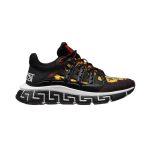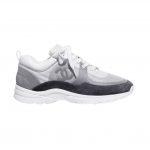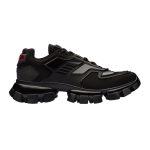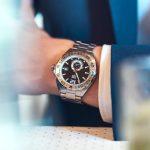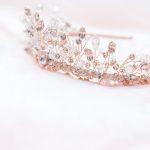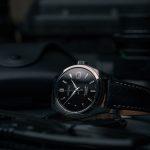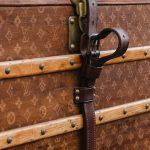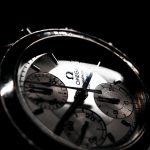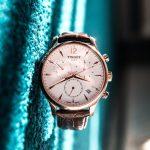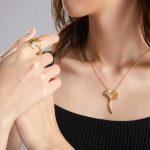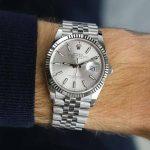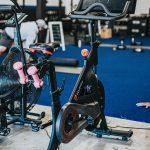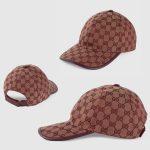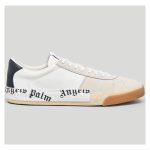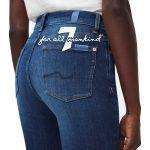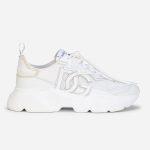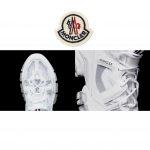Cufflinks Size Chart And Buying Guide
The last thing you want is to be wearing your most expensive suit and then notice that your cufflinks did not match. What’s the point of having a large, elaborate piece of jewelry on one hand if it doesn’t match? This blog post will provide information about cufflinks size chart and buying guide for all types so you can find the perfect pair for any event.
How Can Types of Cufflink Affect Your Buying Decision?
There are many different styles available in stores today, but there are some basic differences between them. The first type is called a “standard” or “traditional” cufflink. These have been around since the 18th century, and they tend to be more ornate than modern-style designs.
Before you can determine what size your cufflink is, you should know what type of cufflinks you are looking for. There are many different cufflink types available in stores today, but there are some differences between them. To help you with your research, check out the chart below for the different designs in terms of fastening.
| Common Types of Cufflink | |
| Type | Description |
| Bullet Back Cufflink | These are the classic cufflinks that you see on dress shirts. They have two separate pieces, usually a bar and a round piece, which fit together to make sure they remain secure while wearing them. Bullet back is the most common type of cufflink. |
| T-Bar Cufflink | They are similar to bullet back, but they have a T-shaped bar that goes through the hole in the shirt instead of two separate pieces. They are usually less expensive, but they may be harder to find. They come in the same sizes as bullet back. The cufflink is often a curved post or straight post. |
| Flat Back Cufflink | These have a flat back, which can be worn on any type of shirt or material without leaving an impression. They are also much less likely to leave holes in the fabric since they do not have prongs like other types. |
| Knotted Cufflink | The design element for this type is that they are small and have a knot in the middle as a closing mechanism. |
| Diamondback Cufflink | Is a pair of separate pieces with prongs on each end and small diamonds in between the two bars, which help prevent them from coming apart. |
How To Choose The Correct Size?
Size matters because cufflinks, unlike other accessories, should not be able to be mistaken for something else like a shirt button or brooch. The best way to ensure you are buying the right size measurement is to know the diameter of the buttonholes on the shirt cuff and determine the type of cufflink you want.
Cufflinks size chart
To help you, check the size chart below for the approximate sizes according to the type.
| Cufflinks Size Chart | ||||||
| Type | Small | Medium | Large | |||
| in | mm | in | mm | in | mm | |
| Bullet Back | .25 | 6mm | .38 | 10mm | .50 | 13mm |
| T Bar | .25 | 6mm | .38 | 10mm | .50 | 13mm |
| Flat Back | .38 | 10mm | .50 | 13mm | .63 | 16mm |
| Knotted | .50 | 13mm | .63 | 16mm | 0.75 | 19mm |
| Diamondback | .50 | 13mm | .63 | 16mm | 0.75 | 19mm |
Note: Curved posts are slightly larger in size compared to straight ones.
General rule: There are no standard sizes when wearing a cufflink. Just make that the cufflink size should be proportional to the size of the buttonhole. The younger wearer, the smaller the cufflink should be.
Measuring the Buttonhole
To measure the buttonhole, you can use a ruler with millimeters on it to measure the diameter of the buttonhole in place. If there is no opening, take a thin strip of paper or cloth and insert it into the buttonhole until you can feel the top and bottom of the hole.
Once you know what size cufflinks will fit through your shirt’s buttonholes, make sure they match up with any other measurements for personal preference.
Other Factors To Consider When Buying
In the 19th century, modern cufflinks became popular, but they were usually more of a personal accessory used to express creativity and style. In the 20th century, cufflinks went from being an expression of personal taste to something that was more about tradition during formal events such as weddings or funerals.
In addition to the size and the type, you should consider the following when deciding:
Cufflink Materials
Cufflinks come in various materials like enamel, mother-of-pearl, and onyx. You can also find enamel, wood, glass, and plastic cufflinks. Metal cufflinks sets are the most common, but you can also find them in just about any material.
If you are looking for a durable option that will last long, titanium or stainless steel would be the best choice because they will not corrode.
Tip: If you are looking for an elegant present to give as a gift or personal accessory, then gold or silver cufflinks with an enamel finish would be a good choice.
Cufflink Shape and Design
Cufflinks also come in many different shapes, so you can find the perfect pair to match your personal style. There are many different shapes for cufflinks such as circles, squares, rectangles, and even skull cufflinks. You can also find novelty cufflinks in the shape of things like cars or animals.
There are a variety of designs to choose from when it comes to cufflinks. Some have simple designs while others have intricate details that make them more unique. You can also find themed cufflinks that match your interests or outfit perfectly. An example of a unique design is the collaboration of an architect Zaha Hadid Design and jewelry brand Tateossian.
Color
The traditional color is silver tone cufflinks, but gold and copper are options as well. Blue cufflinks are a popular color. A neutral color like black, gray, or brown can go with any color of shirt.
Price
Cufflinks range in price from about $30 to hundreds of dollars depending on what type they are and where you buy them. For a first-time buyer, it is best to start somewhere in the middle and see if that is a style you like before investing too much money.
Brand
You can find cufflinks from many top brands like Cartier, Gucci, Montblanc, and more. Not only are they made by different companies but the design of them may be unique to that brand as well. You have to decide whether or not you want a very classic style with little personalization options or something that is more unique to you.
Features
Special cuffs that do not have buttonholes, such as French cuffs, use locking dual-action cufflinks to clasp in place. This is done with a post that goes through the loop on the other side of the cuff and a bar or prong on the backside of the cufflink that snaps into place. The mechanism can be opened and closed with a hinge locking mechanism.
There are also those that have chain link cufflinks instead of posts. These work similarly to the locking dual action mechanism, but the chains must be threaded through the buttonholes on the shirt. The chains can be opened and closed with a small key or lock that is included with the package.
Other types of mechanisms include swivel bar locks, which use a bar that moves in an upright position to clasp onto a post on the other side of the cuff. Screw-on backs require you to twist a knob on the backside of the cufflink to secure them. And snap closures use two pieces that fit together like puzzle pieces and click into place when closed.
How To Put on Cufflinks?
You should slide one side of your shirt sleeve through both sides of each cufflink before locking them into place by sliding a locking mechanism or twisting a knob.
Tip: It is possible to wear cufflinks and a watch together, but finding a style that works well may be more difficult. You should try on different combinations until you find something that looks good.
FAQs
What is the difference between a cufflink and a tie clip?
A cufflink is a small fastener, usually made of metal, designed to secure the shirt cuff. A tie clip is a decorative clasp that attaches to the front of a necktie, holding it in place.
Do cufflinks replace buttons?
No. Cufflinks are an accessory to a shirt and should not be used in place of buttons.
Do I need cufflinks?
If you have a French cuff shirt, then you will need cufflinks. If you do not have a French cuff shirt, then you may choose not to wear them.
Can you wear cufflinks with chinos?
It is possible to wear cufflinks with chinos, but since they are usually worn in more formal settings it may not be the best choice.
How do you clean cufflinks?
Cufflinks should be cleaned with a cloth or soft-bristled brush. You can also use warm water, soap, and a toothbrush for any hard-to-reach spots on the links. Make sure they are completely dry before wearing them again so that your shirt doesn’t get ruined by moisture.
Conclusion on the cufflink size chart
There are many things to consider when buying cufflinks, but it should be a little easier with the size chart and general guidelines above. Consider the color, material, price, brand, and design before making your purchase!
Picture in this post by Nate Johnston on Unsplash
Related Luxury Size Charts
- Fendi Shoes Size Chart : Do Fendi shoes fit true to size?
- Gold Brick Size and Weight
- Versace Shoes Size Chart : Do Versace shoes run true to size ?
- Chanel Shoes Size Chart : Are Chanel shoes true to size?
- Prada Shoe Size Chart : Do Prada Shoes run true to size ?
- TAG Heuer Watch Sizes
- Longines Watch Sizes
- Michael Kors Bag Sizes
- Tiara Sizes and Different Styles
- Seiko Watch Sizes
- Louis Vuitton Luggage Sizes
- Omega Size Charts of Watches
- Tissot Watch Sizes
- What is my Michael Kors Shoes Size?
- Diamonds Size Chart and Comparison by Carat and Diameter
- Necklace Size Chart and Fitting Guide for Adults and Children
- Ralph Lauren Men Size Chart & Fitting Guide for Clothes & Shoes
- Rolex Size Charts and Sizing Guide
- Peloton Bike Size and Dimensions guide
- Cufflinks Size Chart And Buying Guide
- Gucci Cap Size Chart and Fitting
- Palm Angels shoes size chart and fitting guide
- Amiri Jeans Size Chart and Fitting
- 7 For All Mankind Size Chart & Fit Guide
- Dolce & Gabbana Shoes Size Chart and Fitting
- Amiri Shoes Size Chart and Fitting : They are true to size
- Gucci Jeans Size Chart
- Moncler Shoes Size Chart and Fitting
- Valentino Shoes Size Chart and Fitting



